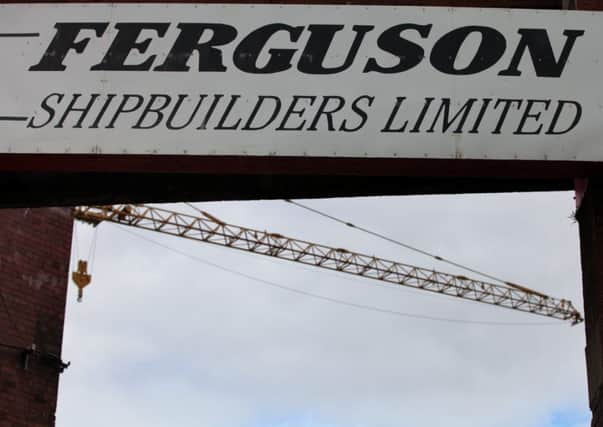End of Ferguson shipyard adds to industry’s demise


From the one stretch of water, fleet after fleet of vessels were sent the world over, cementing the west of Scotland’s status as the engine room of the empire.
But today’s announcement of the demise of Ferguson Shipbuilders, the last working shipyard on the lower Clyde, is one of the last breaths of an industry that has been on life support for years.
Advertisement
Hide AdSituated in the shadow of Newark Castle, the 111 year old Port Glasgow firm has offered a rite of passage to generations of menfolk on the Firth of Clyde, as boys were forged into men as they went in the red-brick building and came out steel cutters, plate rollers and welders.
From its first contract to build two steam tugs, it became a powerhouse of the Inverclyde economy, producing a host of merchant ships and ferries.
Its ailing health, however, was highlighted in stark fashion in 2005 when it lost out on two contracts to a rival Polish firm - one for Caledonian MacBrayne for £9.5m, the other for a new fisheries protection vessel for the then Scottish Executive. Other work came in afterwards, but the future was never anything other than short term.
The news that the company has entered receivership serves a reminder of how shipbuilding was not the preserve of the Upper Clyde and the Glasgow area.
In neighbouring Greenock, for example, the names of once illustrious firms such as Scotts, browns, Lithgows and Head exist only in oral histories and museums.
Further afield, Clydebank has also had to endure the high-profile demise of its own yards, not least John Brown & Company.
Advertisement
Hide AdAs long ago as the depression of the early 1930s, the volatility of the trade was laid bare when the rusting hulk of the Queen Mary lay abandoned in the yard for two and a half years, a sad affair which novelist George Blake described in his book, The Shipbuilders, as “a monument to the glory departed.”
What, one wonders, would the writer have made the situation eight decades on? Where once the Clydeside industry started by Tod & MacGregor exceeded the combined production of France, Germany and Japan, the waning demand for navy and merchant vessels, combined with cheaper labour cost and overseas competition has brought it to its knees.
Advertisement
Hide AdIn Port Glasgow town centre, where the largest employer is a sprawling Tesco megastore, there is a replica of the PS Comet, the first commercial steam vessel in Europe that was built by the town’s John Wood & Co in 1812.
Over two centuries later, it is a source of pride and inspiration, and tonight no doubt, melancholy.